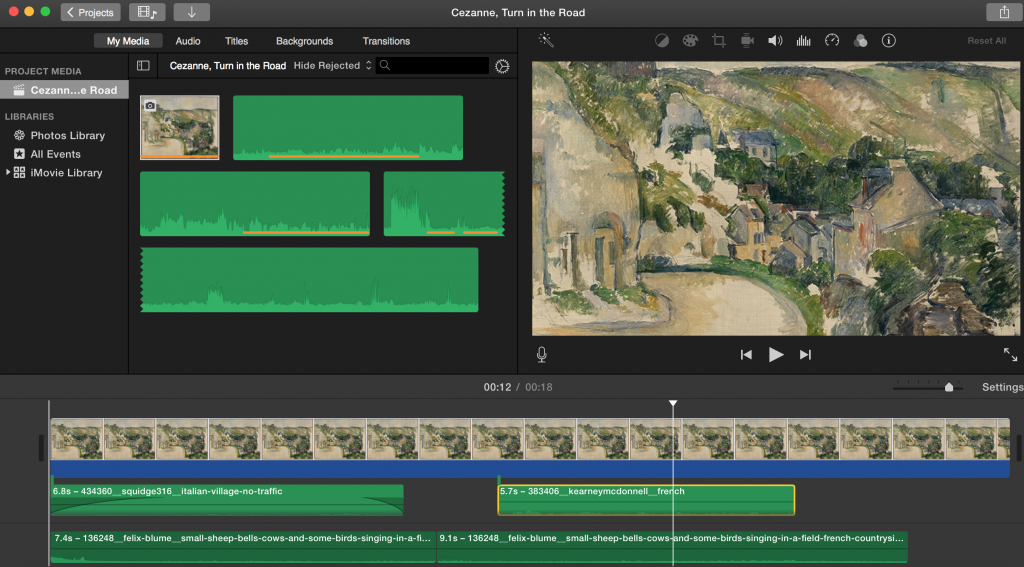My name is Emily Biggs, and I’m a Smith College Museums Concentrator. This is my Capstone Project, a culmination of my work in the Concentration. More information about me and my museums journey can be found here.
This project is an examination of embodied experience, an attempt to bring more physicality to art museum gallery moments. Creating “interpretive tracks,” I intend these soundscapes to function as an alternative form of object label, pushing beyond the bounds of traditional word-based learning and combatting the interpretive limitations of text alone. Contemporary museum research continuously notes that labels are getting shorter and shorter, facing an ever-shrinking visitor attention span. The interpretive tracks are dual purpose; they offer both information about the art or artist, but also an enriched viewing experience, engaging visitors’ audio sense. More intellectual understanding of the project can be found here.
WHAT IS IT?
This project is a series of soundscapes, audio tracks mixed by me, for individual art pieces on view in the Smith College Art Museum. The pieces have been chosen solely based on my personal preference, they are not grouped into a tour. Each soundscape has been constructed at my own discretion, and by my own artistic license. This website houses the soundscapes, and is intended to function as an online reflection of in-gallery experience with the art and audio.
MY PROCESS
In thinking about the sound of art, I spent some time with each piece, contemplating and imagining its various identities. Constructing the tracks tended to flow along a spectrum of description and interpretation. At first, I thought about what it would sound like to be inside of the piece. With scenic or descriptive paintings, this isn’t a very difficult task. For this reason, I tried to vary the depth of abstraction in the choices of my sounds; some tracks feature sounds that represent something important to the artist’s life, or their process.
Some pieces feature more than one soundscape. Admittedly, this comes from my own indecision in representing the art auditorily, but also reflects the range and variety of visitors’ emotional responses to each piece. On these pages, viewers are prompted to select a mood, which corresponds to the soundscape options.
TOOLS

These interpretive tracks were mixed in iMovie. All audio comes from an online repository, Freesound.org, which is protected under the Creative Commons license. iMovie allowed me to layer and edit the audio, and also constantly see the piece as I was working on its corresponding soundscape.